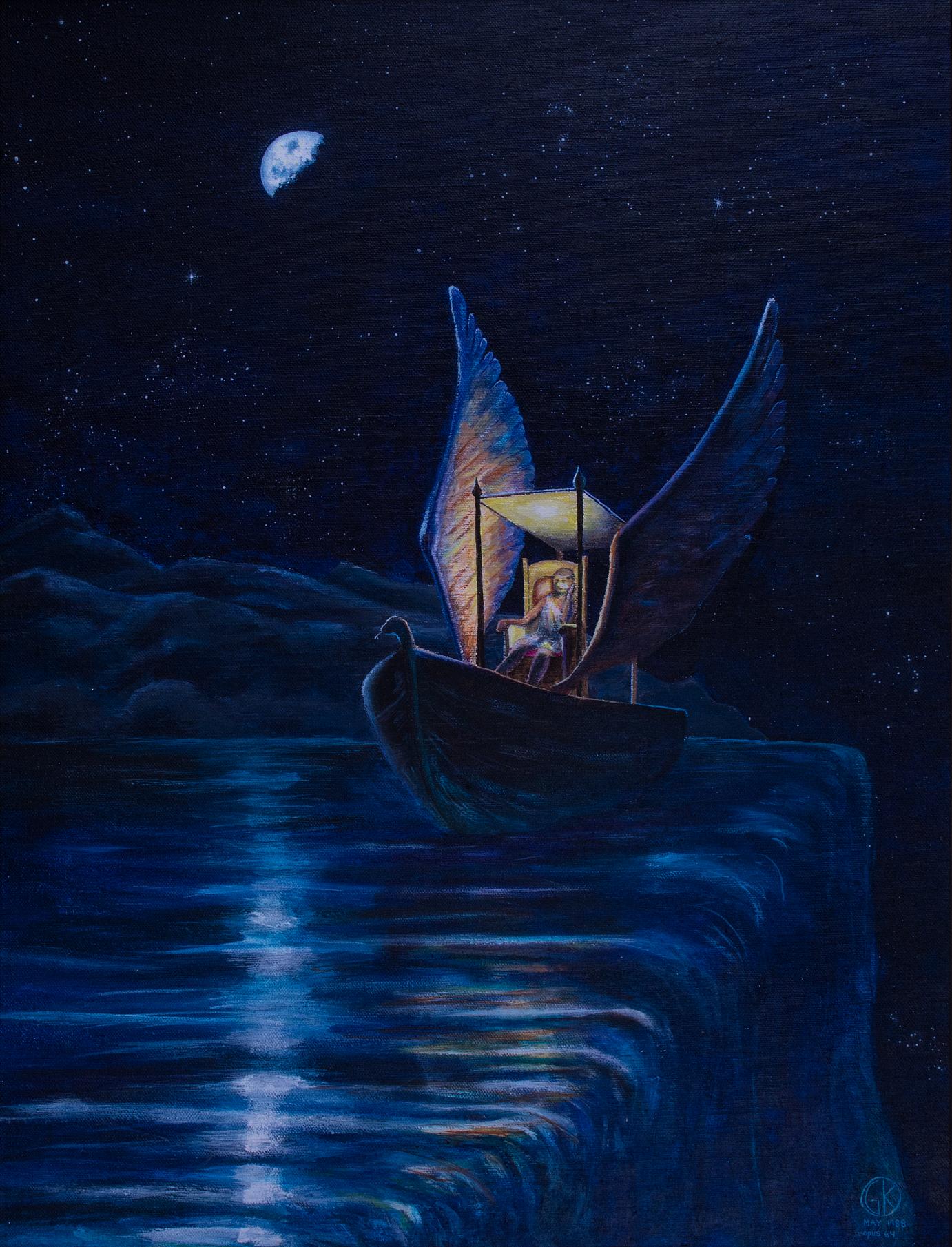Imaginative Art
01-01-2019 8:27 am
It’s hard to say for sure, but it is thought that the earliest works of art we know of served a religious purpose. Early cave paintings were thought to show men successfully hunting as a sort of magic that would make it true for the real hunt. Early female figurines are thought to be fertility symbols. For most cultures up until after the Renaissance, art was still connected to our religious thinking and our search for greater meaning in the world. In Greek culture, where Philosophy developed, it seems the art was connected for a search for purity and perfection, which was revived in the Renaissance and connected to the religion of that time.
When the middle class developed in the 1600s, art became somewhat disconnected from Christianity and landscape and still life painting formed. These were, on the surface, just a record of what we see before us, but the earliest examples of still life did have a more philosophical statement about us, life and our mortality. So even then art was serving the purpose of “seeing” something more than what meets the eye and searching for something greater in our lives.
This led artists throughout history to apply their imaginations to produce work which shows us a “greater” reality. Even with Modern art, artists turned to alternate ways of picturing reality, like Cubism, and to inner reality that produced Surrealism and Expressionism. The vast majority of art through the ages has not served the purpose of capturing reality, but have been the products of the artists’ imaginations. The rise of democracy in the 1800s resulted in the masses being involved in the world’s ideas, which I see as producing a general misunderstanding in most people that art is about realism—not about the artists’ visions. Deeper meaning and imagination in art is generally met with ridicule and the statement, “I don’t know much about art, but I know what I like.” Isaac Asimov had the best retort to this, simply stating that if you don’t know much about art you can’t know what you like because you are not making an informed decision. You are just reacting without understanding, choosing to stay with what is easiest.
But this does not mean that art has ever stepped away from imagination. No work of art, even photography, simply captures what is. All art is changed by the intervention of the artist, making decisions about what to show and how to render it. Photography changes reality when the photographer processes the work either in the darkroom or in Photoshop, or even just with the specific exposure settings of their camera, changing reality to how they want to show it. This doesn’t require the level of imagination seen in Bosch’s “Garden of Earthly Delights,” but it is imagination nonetheless. Every work of art is ultimately about the thinking and philosophy of the artist rather than reality. Art is about our ideas, not about recording the world. So art is still tied closely to our search for meaning and is strongly related to religion, philosophy and science.
When discussing different types of art, we are discussing different levels of the imagination and the way that imagination is applied to the work—what ideas the artist presents to you. Some are closely tied to our everyday reality and wish to make simpler connections to what we see in order to present the idea. Other works leave the everyday world behind to explore completely imagined “worlds” that do not exist except in the mind of the artist. Often these worlds are intended to reflect back on reality to make a point. You see this in the work on H.G. Wells, where his science fiction serves to make philosophical statements about how the rise of technology was affecting his society. Tolkein was using the imagined Middle Earth to reflect the events taking place in his world as WWII happened. Sometimes other worlds are created to allow us an escape from the stresses of our realities and show us a world where good can triumph. These escapist worlds come from the belief in and the search for a meaning to our lives beyond doing a repetitive job, raising a family and then dying.
All of these different applications of imagination are tied to our search for meaning and our need to communicate our ideas. Imagination is the primary tool of art. It is the means that art uses to show you the idea in the work, whatever that may be.